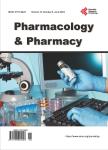Global Burden of Fungal Infections and Antifungal Resistance from 1961 to 2024: Findings and Future Implications
Global Burden of Fungal Infections and Antifungal Resistance from 1961 to 2024: Findings and Future Implications作者机构:Department of Pharmacy School of Health Sciences University of Zambia Lusaka Zambia
出 版 物:《Pharmacology & Pharmacy》 (药理与制药(英文))
年 卷 期:2024年第15卷第4期
页 面:81-112页
学科分类:081704[工学-应用化学] 07[理学] 08[工学] 0817[工学-化学工程与技术] 070303[理学-有机化学] 0703[理学-化学]
主 题:Antifungal Resistance Antifungal Stewardship Antimicrobial Resistance Fungal Infections Global Burden Immunocompromised Mycosis
摘 要:Background: Antifungal resistance (AFR) is a global public health problem with devastating effects, especially among immunocompromised individuals. Addressing AFR requires a One Health approach including Antifungal Stewardship (AFS). This study aimed to comprehensively review global studies published on fungal infections and AFR and to recommend solutions to address this growing problem. Materials and Methods: This was a narrative review that was conducted using published papers on fungal infections, AFR, and AFS between January 1961 and March 2024. The literature was searched using PubMed, Google Scholar, Web of Science, and EMBASE. Results: This found that there has been an increase in fungal infections globally, especially among immunocompromised patients. Due to this increase in fungal infections, there has been a proportionate increase in the use of antifungal agents to prevent and treat fungal infections. This increased use of antifungal agents has worsened the problem of AFR contributing to increased morbidity and mortality. Globally, fungal infections have contributed to 150 million infections annually and 1.7 million deaths per year. By the year 2023, over 3.8 million people died from fungal infections. Addressing AFR remains a challenge because the treatment of antifungal-resistant infections is difficult. Finally, the treatment of fungal infections is a global challenge exacerbated by the limited number of antifungal agents to treat invasive fungal infections. Conclusion: The results of this study indicated that fungal infections and AFR are prevalent across humans, animals, agriculture, and the environment. Addressing this problem requires the provision of solutions such as improving the awareness of AFR, conducting further research on the discovery of new antifungal agents, and implementing AFS programs. If this global problem is not addressed, the morbidity and mortality associated with AFR will continue to rise in the future.



